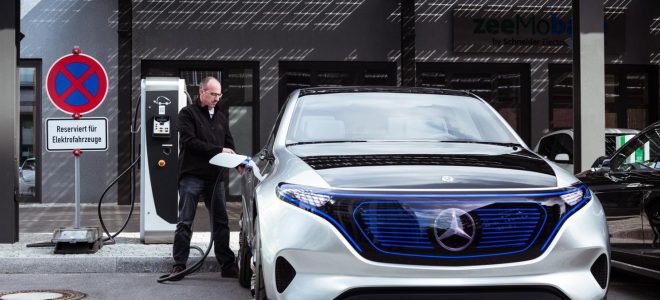Like most debates these days. the debate on the carbon footprint of electric vehicles is a heated one with the most vocal opinions coming from extreme camps. Again. like most other debates. the truth is at neither extreme. It is in the middle and says that electric vehicles would never have a chance against internal combustion engines if it weren’t for the oil industry or. more specifically. the petrochemicals industry.
It’s a truth often overlooked that there are thousands of products we use in everyday life that contain oil derivatives. The list is impressively long even without including plastics. but plastics are the biggest reason why EVs cannot do without oil. and this includes carbon fiber. which is also an oil derivative.
Here’s a detailed infographic from the American Fuel &. Petrochemical Manufacturers that details exactly how dependent EVs are on their production. While a dedicated EV supporter could argue the data will undoubtedly be skewed in favor of petrochemicals. things actually boil down to something quite simple: weight.
Electric vehicles need to be as lightweight as possible to have a longer range. At the same time. they need to be relatively affordable. so there is a meaningful market for them. The only materials that can to date cover both these requirements are oil and gas-derived polymers. You could make polymers from renewable sources. but these have been slow to take off. most likely due to the higher cost of production.
Back in 2012. Frost &. Sullivan research forecast that global demand for plastics will soar in the years to 2017 thanks precisely to the growing adoption of electric vehicles. They projected a compound annual growth rate of as much as 80 percent between 2012 and 2017 on the back of EV market growth. While this has not exactly been the case. demand for plastics has risen significantly: according to IHS Market. it doubled between 1999 and 2018 to exceed 100 million tons.
So. it seems for the time being that EVs are dependent on the oil industry as much as the healthcare industry is (single-use plastics make up one of the pillars of modern medicine). But does this mean they have a carbon footprint equal to—or even larger as some claim—than internal combustion engines? Hardly. When it comes to carbon footprints. the most important factor for EVs is the electricity they consume. once you accept the thought that quite a bit of oil has gone into the construction of the vehicle.
When it comes to electricity. EVs in countries that rely on renewable power will naturally have a much lower carbon footprint than the same EVs in a country that derives most of its power from coal.
Here are a helpful couple of maps that illustrate this difference. In India and China. where coal is still the dominant primary source of energy. electric cars have a much higher total carbon footprint than they do in. say. Norway. Europe’s leader in renewable power.
So. the EV industry needs petrochemicals to continue making its products competitive and affordable by more than the wealthiest class. and the petrochemicals industry needs EVs to secure a long-term market for its products. No wonder. then. that Big Oil is expanding its petrochemicals operations.
 Iran Energy News Oil, Gas, Petrochemical and Energy Field Specialized Channel
Iran Energy News Oil, Gas, Petrochemical and Energy Field Specialized Channel




